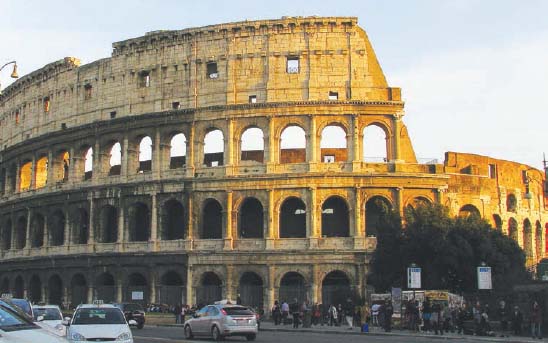Art of the Ancient World, C. 5000 B.c.e.–400 C.E.Roman Art |
What is the Pantheon? |
Topped with the widest dome on earth until the nineteenth century, the Pantheon is an important example of Roman architecture, built between 125-128 C.E., during the reign of Emperor Hadrian. The name “Pantheon” refers to the fact that the temple was dedicated to all of the Olympian gods, who the Romans worshipped as the Greeks had done. The Pantheon was originally built on a podium, like an Etruscan temple, but hundreds of years of development around the site now hide this, along with the original stairs which led up the middle of the podium. The entrance portico features Corinthian columns and leads to an enormous rotunda. The walls of the rotunda are nearly seventy-five feet tall and twenty feet thick, which support the enormous dome. At the apex of the dome is a thirty-foot oculus, which means “eye” and allows natural sunlight (and sometimes rain) to pour into the interior of the Pantheon. Besides the engineering innovations needed to build such a wide dome, spanning 143 feet, the Pantheon is impressive because of its harmonious proportions and beautiful decorations. If the dome were doubled, it would form a sphere that fits perfectly within the interior space of the rotunda. The interior of the dome ceiling is decorated with a rows of sunken, ornamental squares that create shifting shadows as the sun moves across the sky and light filters through the oculus.

Roman civic and temple architecture celebrates both government and gods. The Arch of Titus is a formidable commemoration of military victory, while public events at the Coliseum (pictured) entertained the masses over two thousand years ago.
